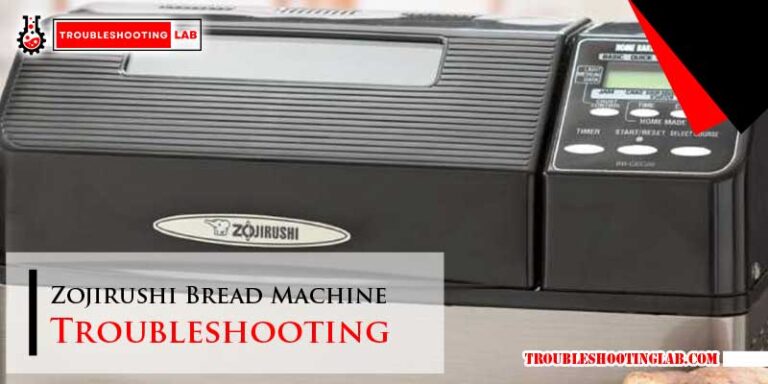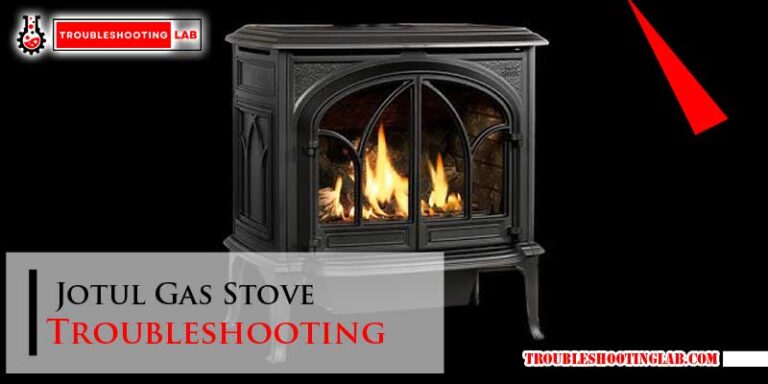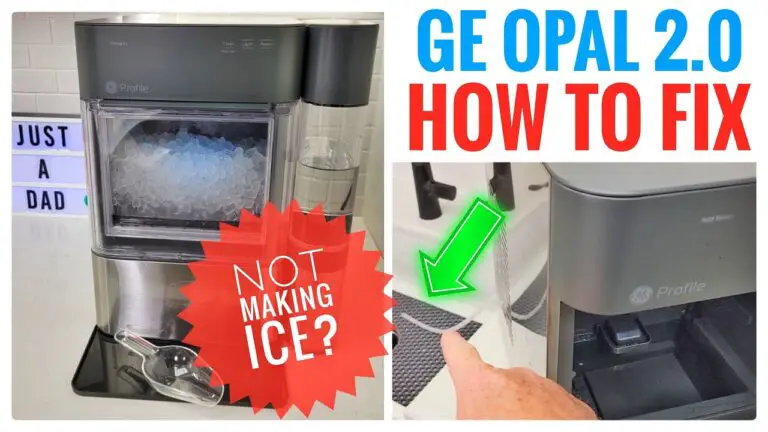Maytag Range Troubleshooting: Easy Fixes for Common Issues
Is your Maytag range acting up and leaving you frustrated in the middle of meal prep? You’re not alone.
Whether it’s a burner that won’t heat, an oven that won’t bake evenly, or a mysterious error code flashing on the display, these issues can disrupt your routine and feel overwhelming. But here’s the good news: you don’t need to be a tech expert to troubleshoot many of these problems.
In this guide, we’ll walk you through simple, step-by-step solutions to common Maytag range issues. By the end, you’ll feel confident tackling these challenges and getting your appliance back to peak performance. Ready to save yourself time, money, and stress? Let’s dive in!

Credit: www.youtube.com
Common Problems With Maytag Ranges
Maytag ranges are known for their reliability and performance, but like any appliance, they can face occasional hiccups. Understanding common problems can save you time, money, and frustration. Let’s dive into some of the most frequent issues and how you can address them.
1. Uneven Heating
Does your food come out half-baked on one side and overcooked on the other? Uneven heating is one of the most common complaints with ranges. This often happens when the heating element is damaged or there’s a calibration issue with the thermostat.
To troubleshoot, check if the heating element glows evenly when the oven is on. If not, it may need replacement. Also, consider using an oven thermometer to test if the internal temperature matches the setting on your range.
2. Burner Won’t Light
A burner that refuses to light can be frustrating, especially when you’re in the middle of cooking dinner. This problem usually points to a dirty burner or a clogged igniter. Grease and food particles can easily block the gas flow or prevent the igniter from sparking.
Start by cleaning the burner cap and igniter with a soft brush and some soapy water. Make sure everything is completely dry before testing the burner again. If the problem persists, the igniter might need to be replaced.
3. Oven Door Won’t Close Properly
A door that doesn’t close all the way can lead to heat escaping, uneven cooking, and longer preheat times. Often, this happens when the door hinges are bent or the gasket (the rubber seal around the door) is worn out.
Inspect the hinges for any visible damage. If they appear fine, check the gasket for cracks or tears. Replacing a worn gasket is a simple DIY fix that can make a big difference in your oven’s performance.
4. Control Panel Not Responding
If the buttons on your Maytag range aren’t responding, it can feel like you’re locked out of your own kitchen. This issue might be caused by a power surge or a software glitch in the control panel.
Begin by unplugging the range for a few minutes to reset the system. If the problem continues, you may need to replace the control panel or consult a professional for further diagnosis.
5. Strange Odors During Operation
Does your oven emit strange smells when you cook? Burnt odors are usually from food debris or grease inside the oven. Chemical smells, on the other hand, could indicate a newly installed oven that hasn’t been properly “burned in.”
Clean your oven thoroughly to remove any leftover food particles. If your oven is new, run it empty at a high temperature for an hour or so to eliminate the chemical residue. Always ensure the room is well-ventilated during this process.
6. Error Codes On Display
Seeing an error code flash on your range’s display can be intimidating. But these codes are your range’s way of telling you what’s wrong. For example, “F1” might indicate a problem with the oven sensor, while “F9” could mean a door latch issue.
Look up the error code in your Maytag range manual for specific guidance. Most issues can be resolved by replacing the faulty part or resetting the appliance. If you’re unsure, don’t hesitate to call Maytag customer support for help.
Have you encountered any of these problems with your Maytag range? Don’t let these issues derail your cooking plans. With a little troubleshooting and care, you can keep your range running smoothly for years to come.
Range Not Heating Properly
Is your Maytag range not heating properly? A malfunctioning range can disrupt meal preparation and create frustration. Identifying the issue is essential to restoring its performance. Below are actionable steps to troubleshoot and resolve heating problems.
Inspecting The Heating Element
The heating element is a critical part of your range. Check for visible damage such as cracks, breaks, or discoloration. A damaged heating element may not heat effectively. Use a flashlight if needed to inspect hard-to-see areas. Replace the element if you find any defects.
Ensure the heating element is securely connected to the range. Loose connections can prevent proper functioning. Push the element firmly into its socket to confirm it’s fully seated.
Checking The Power Supply
An unstable power supply can cause heating problems. Verify the range is properly plugged into the electrical outlet. Check the outlet for signs of damage or wear. Use a multimeter to test if the outlet is supplying the correct voltage.
If your range operates on a circuit breaker, inspect the breaker. A tripped breaker may cut off power to the range. Reset the breaker and test if the range begins to heat.
Testing The Temperature Sensor
The temperature sensor ensures your range heats to the correct level. A faulty sensor can prevent the range from reaching the desired temperature. Access the sensor by removing the back panel of the range.
Test the sensor with a multimeter to check for continuity. Refer to the manufacturer’s guidelines for proper readings. Replace the sensor if the readings are outside the recommended range.
Ensure the sensor is not touching the walls of the oven. Improper placement can affect accurate temperature readings.
Burner Issues
Burner issues with a Maytag range can disrupt your cooking routine. Whether electric or gas, burners can face common problems. These include not heating, uneven cooking, or difficulty igniting. Understanding the cause helps you fix it quickly. Below are practical tips for resolving burner issues.
Fixing Electric Burners
If an electric burner stops working, check its connection first. Ensure the burner coil is firmly seated in its socket. A loose connection can prevent it from heating. Inspect the coil for visible damage, like cracks or burn marks. A damaged coil needs replacement.
If the burner still doesn’t heat, test the socket. Swap the faulty burner with one that works. If the new burner doesn’t heat, the socket may be defective. In this case, consult a technician for repair. Always turn off the range before troubleshooting.
Cleaning Gas Burners
Gas burners can get clogged with food debris. This can block the flow of gas, causing ignition issues. Start by removing the burner caps and grates. Wash them with warm, soapy water. Use a brush to scrub off stuck-on grime.
Check the burner ports for clogs. Use a toothpick to clear any blockages. Avoid using sharp objects that can damage the ports. Once clean, dry all parts thoroughly before reassembling. A clean burner ensures proper gas flow and ignition.
Addressing Uneven Heating
Uneven heating is a common complaint for both electric and gas burners. For electric burners, check if the coil is level. An uneven coil can cause inconsistent heat distribution. Adjust it to sit evenly in its socket.
For gas burners, uneven flames may indicate a clogged port. Clean the burner thoroughly to restore proper flame distribution. If the problem persists, check for a misaligned burner cap. Align the cap properly to fix the issue.

Credit: paradiseapplianceservice.com
Oven Door Won’t Close
Few things are as frustrating as an oven door that refuses to close. Whether you’re preparing a big family meal or just trying to bake some cookies, this issue can throw off your entire cooking plan. Luckily, you can troubleshoot and fix this problem with just a bit of patience and know-how. Let’s dive into the most common causes and solutions to get your Maytag oven door back in working order.
Checking For Obstructions
The first step is to check if something is physically blocking the door. Food debris, utensils, or even a misplaced oven rack could prevent the door from closing fully. Carefully inspect the oven cavity and remove anything that might be in the way.
If you notice crumbs or small pieces of food stuck around the edges, clean them out with a damp cloth. Sometimes, even a small obstruction can interfere with the door’s alignment. After cleaning, test the door to see if it closes properly.
Inspecting The Door Hinges
Damaged or misaligned hinges are another common culprit. Open the oven door and take a close look at the hinges on both sides. Are they bent, loose, or out of place?
If the hinges look bent, you may need to gently straighten them with pliers. For loose hinges, tighten the screws using a screwdriver. If the hinges are severely damaged, you might need to replace them. It’s not as intimidating as it sounds—replacement hinges for Maytag ovens are widely available online.
Replacing The Door Seal
A worn or damaged door seal can prevent the oven door from closing snugly. The seal, often made of rubber or silicone, lines the edge of the oven door to create a tight fit. Over time, it can become cracked, loose, or completely worn out.
To check, run your fingers along the seal and feel for gaps or tears. If you notice any damage, you’ll need to replace the seal. New door seals are affordable and easy to install—just pull the old one out and press the new one into place, following the grooves around the door frame.
Once you’ve replaced the seal, close the oven door and see if it fits tightly again. A good seal not only fixes door issues but also keeps your oven energy-efficient, preventing heat from escaping.
By addressing these three areas—obstructions, hinges, and the door seal—you can solve most issues with your Maytag oven door not closing. If none of these steps work, it might be time to consult a professional to avoid further damage. But in most cases, a little troubleshooting is all it takes to get back to cooking without interruptions.
Control Panel Malfunctions
Your Maytag range’s control panel is like the brain of your appliance. When it starts acting up, you might find it impossible to adjust temperatures or select cooking modes. The good news? Many control panel issues are fixable without needing professional help.
Resetting The Control Panel
Sometimes, the simplest solutions work wonders. A quick reset can clear minor glitches that build up over time. To reset, unplug your range from the power source for at least one minute.
After plugging it back in, check if the buttons respond properly. If they don’t, try a second reset and ensure no power surges are affecting your outlet. This small step often resolves unresponsive or frozen buttons.
Inspecting The Circuit Board
If resetting doesn’t work, the issue may lie deeper within the circuit board. You’ll need to remove the back panel of your range to access it. Look for signs of burnt or damaged components, like discoloration or a melted appearance.
Using a multimeter, you can test if the board is still conducting electricity. If it’s faulty, you might need to replace it—but double-check the wiring connections first. Sometimes, loose wires can mimic circuit board failure.
Replacing Faulty Buttons
Are certain buttons on your control panel sticking or not responding at all? This could mean they’ve worn out over time. Check your user manual to find the part number for replacement buttons. You can order these online or at a local appliance store.
To replace the buttons, remove the control panel cover carefully and pop out the damaged ones. Make sure the new buttons click securely into place. It’s a straightforward fix that can breathe life back into your range.
Have you ever faced a control panel issue that seemed overwhelming at first? Taking small, logical steps can often save your appliance and your wallet. Would you rather troubleshoot it yourself or call for help? Let us know below!
Oven Not Self-cleaning
Is your Maytag oven refusing to self-clean, leaving you with stubborn grease and grime? Don’t stress—it’s a common issue that often has simple solutions. Let’s break it down step by step so you can get your oven back to sparkling without hiring a repair technician.
Checking The Self-cleaning Settings
Before diving into other fixes, start by verifying the self-cleaning settings. Sometimes, the issue is as simple as selecting the wrong mode or not setting the timer correctly.
- Ensure the oven door is securely closed. Most ovens won’t start the self-cleaning process if the door isn’t latched properly.
- Check your user manual for specific instructions on activating the self-cleaning cycle. Mistakes in pressing buttons or selecting settings can halt the process.
- Double-check the power source. If your oven isn’t getting enough electricity, the self-cleaning function may not work as expected.
Small missteps can often cause big headaches. Could a simple adjustment here be all your oven needs?
Inspecting The Door Lock Mechanism
If your settings seem fine, turn your attention to the door lock mechanism. During self-cleaning, the oven locks itself for safety reasons—if this feature malfunctions, the cleaning cycle won’t start.
- Listen for a clicking sound when you attempt to start the self-cleaning process. No sound may indicate a faulty lock motor.
- Inspect the latch for visible damage or debris. Even a small obstruction can prevent the door from locking correctly.
- If you notice damage, consider replacing the door lock assembly. Many replacement parts are available online and are relatively easy to install.
Don’t overlook this step—it’s a common culprit. A quick inspection here can save you hours of frustration.
Clearing Error Codes
Sometimes, your oven may display an error code that prevents self-cleaning. These codes are your oven’s way of telling you what’s wrong.
- Look for an error code on your oven’s display panel. Write it down for reference.
- Consult your user manual or search online for the meaning of the specific error code. Maytag’s website often provides detailed explanations and troubleshooting tips.
- Reset the oven by unplugging it for a few minutes or switching off the circuit breaker. This can clear minor glitches causing the error.
Don’t skip this step—error codes can be incredibly helpful in pinpointing the issue. Why not let your oven tell you what it needs?
Troubleshooting a self-cleaning oven doesn’t have to be overwhelming. By following these steps, you’ll be one step closer to a fully functional, sparkling clean Maytag oven. What’s the first thing you’ll cook once it’s spotless again?
Strange Noises During Operation
Strange noises from your Maytag range can be unsettling. They might signal underlying issues that need attention. Understanding these sounds is key to maintaining your appliance. Different noises could point to specific problems. Let’s explore how to identify and fix them.
Identifying The Source Of The Noise
Start by pinpointing where the noise is coming from. Is it near the fan, burner, or another area? Listen closely to determine the type of sound—clicking, buzzing, or rattling. Identifying the location helps narrow down possible causes.
Pay attention to whether the noise occurs during specific operations. For instance, clicking sounds may happen when burners ignite. Buzzing could be linked to electrical components. Knowing these patterns makes troubleshooting easier.
Fixing Fan-related Sounds
The fan inside your range might cause unwanted noises. Check if the fan blades are obstructed by debris. Clean the area carefully to remove dirt or dust buildup. This often reduces noise significantly.
Loose or damaged fan parts can also create sounds. Inspect the blades and screws securing the fan. Tighten loose screws using a screwdriver. Replace broken parts to restore quiet operation.
Addressing Loose Components
Loose components can rattle or clang during operation. Inspect areas such as the burners, knobs, and panels. Check for screws or bolts that may have loosened over time.
Use a wrench or screwdriver to secure loose parts. Ensure everything is tightly fastened but avoid over-tightening. This prevents damage while reducing unwanted noise.
If panels or covers are vibrating, check their alignment. Reposition or secure them correctly to stop the sound. Regular maintenance keeps parts firmly in place.
Error Codes And What They Mean
Ever been mid-cooking and your Maytag range flashes an error code? It’s frustrating, right? These error codes aren’t random—they’re your range’s way of communicating that something’s wrong. Understanding what these codes mean can help you fix minor issues or know when it’s time to get professional help.
Common Error Codes
Maytag ranges often show error codes like F1, F3, or F9. Each code indicates a specific problem. For example:
- F1:This typically signals an issue with the electronic control board. It could be a short circuit or a malfunction.
- F3:Usually refers to a faulty temperature sensor. Your oven might not heat properly.
- F9:This error often points to a door lock problem. You might notice the oven door won’t open or close as expected.
These codes aren’t just numbers—they’re clues. Take note of the code and check your user manual for specific details.
Steps To Clear Error Codes
Clearing error codes can be easier than you think. Here’s what you can try:
- Start by turning off your range and unplugging it from the power source. Leave it unplugged for 5-10 minutes.
- Plug it back in and see if the error code disappears. Sometimes a simple reset is all it takes.
- If the code persists, check for visible issues like a disconnected wire, damaged temperature sensor, or stuck door lock.
Don’t ignore error codes. Even if you clear them temporarily, they might pop up again if the root problem isn’t resolved.
When To Call A Technician
Some issues require professional attention. But how do you know when to make the call?
- If error codes keep returning despite resets, it’s likely a deeper issue.
- When you notice strange noises or smells, don’t try to fix it yourself. Electrical problems can be risky.
- If you’re unsure how to replace components like the control board or temperature sensor, a technician will save you time and effort.
Remember, tinkering without proper knowledge can lead to bigger problems. Ask yourself: Is this worth risking more damage, or should I leave it to the experts?
Understanding your Maytag range error codes empowers you to act quickly and efficiently. Whether it’s a quick fix or a call to a pro, don’t let error codes disrupt your cooking adventures!
Maintenance Tips For Long-lasting Performance
Keeping your Maytag range in top-notch condition doesn’t have to feel overwhelming. With a little effort and consistency, you can ensure long-lasting performance and avoid unnecessary repairs. These maintenance tips will help you extend the life of your appliance while making your cooking experience hassle-free.
Regular Cleaning Routine
A clean range is a happy range. Grease, food splatters, and spills can build up quickly, impacting your range’s efficiency and even causing unpleasant odors. Make it a habit to wipe down the stovetop and control knobs with a damp cloth after every use.
For stubborn stains, use a gentle cleaner designed for kitchen appliances. Avoid abrasive scrubbers that can scratch the surface. Pay extra attention to the burners or heating elements—keeping them clean ensures even heat distribution.
Don’t forget the oven! Run the self-cleaning mode as needed and remove any debris that might block ventilation. A clean oven cooks food more evenly and reduces the risk of smoke during use.
Inspecting Components Periodically
Think of your Maytag range as a system of interconnected parts. Regularly checking these parts can help you catch small problems before they become big headaches. Start with the burners—are they igniting properly? If not, they may need cleaning or adjustment.
Check the oven door seal for any cracks or gaps. A damaged seal can let heat escape, causing uneven cooking and wasting energy. Replace it if necessary to maintain optimal performance.
Inspect the control knobs, switches, and interior lights. If something feels loose or isn’t working as it should, address it promptly. A quick fix today can save you costly repairs tomorrow.
Avoiding Common Mistakes
Even with the best intentions, small mistakes can lead to big issues. Overloading your oven with heavy cookware, for example, can strain the racks and damage the interior. Stick to the recommended weight limits in your manual.
Using the wrong type of cookware on your stovetop can also cause problems. Glass or ceramic cookware may scratch the surface, while oversized pots can block ventilation. Always use cookware that matches the burner size for efficient heating.
Finally, resist the urge to use harsh chemicals or tools to clean your range. They can damage the finish and even void your warranty. A little extra care goes a long way in keeping your range looking and working like new.
Are you following these tips already? If not, which one will you start with today? Taking small, consistent steps can make a big difference in how well your Maytag range performs over time.

Credit: www.maytag.ca
Conclusion
Troubleshooting your Maytag range doesn’t have to feel overwhelming. Start with simple checks like the power source and settings. Many common issues can be resolved with basic fixes. For more complex problems, consult your user manual or seek professional help.
Regular maintenance can also prevent future issues and keep your range running smoothly. With patience and attention, you’ll have your appliance back in working order. Always prioritize safety during any troubleshooting process. A well-functioning range ensures better cooking experiences for you and your family.






